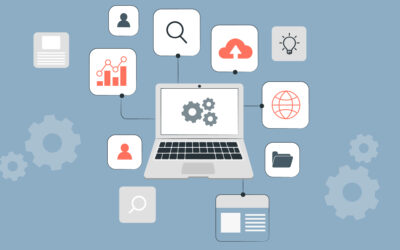Given that we’re dealing with an extraordinary situation, many companies, by now, have some sort of ‘Work-From-Home (WFH)’ policy in place in some capacity or another. Or to put it in another way, they’re prepared to empower employees digitally and tackle any technical challenges that may come their way when working remotely. But where there’s a structural and lifestyle change, there’s a behavioral one as well.
What we have experienced at Xebrio is that remote work, and especially WFH, can be quite challenging. Project managers, therefore, bear the responsibility of alleviating these unique work from home challenges, including ensuring their teammates’ emotional well-being.
Lets look at what it takes for managers and teams to embrace this challenge head-on. We’ll also look at real-life examples of how teams world-over are winning small yet significant victories every single day.
Let’s start at the beginning.
Part A: The Importance of Ensuring the Emotional Well-Being of Remote Teams
– Why it’s essential to ensure the emotional well-being of your team:
“The fact that social isolation is associated with poor mental health is unquestionable.” – Sandro Galea, a population health expert.
According to a case study by the CDC (The Centers for Disease Control and Prevention), a substantial number of people quarantined in Toronto during the 2003 SARS outbreak displayed symptoms of post-traumatic stress disorder and depression. PTSD may sound extreme, but the side-effects of isolation for prolonged periods of time are real, and not often easily recognizable – with isolation and burnout leading the pack.
According to the Sage Journal, loneliness and isolation can be twice as detrimental to both physical and mental health as obesity. Plus, another study conducted by Digital Ocean in 2019 concluded that more than 80 percent of remote-workers felt burnt out. When asked why they felt that way, 52 percent of remote employees said they end up working longer hours; meanwhile, 40 percent said they felt as though they were expected to contribute more.
Putting two and two together, it’s fair to say that encouraging employees to work remotely without focusing on their emotional, mental, and physical well-being can cost the company and the community at large.

Part B: The Adverse Effects of a 24×7 Home Office
– How the dynamic shift to working remotely affects teams:
Unlike the traditional office routine, there are various factors at play when it comes to remote work that can eventually weigh anyone down. These include (but are not limited to):
- Lack of social interactions, loneliness, and increased hostility towards being siloed as a result of forced (and unforced) social distancing.
- Poor productivity due to boredom, anxiety, and reduced motivation coming from a culmination of situational and environmental reasons
- Potential physical and mental health issues as a result of a sudden change in routine habits, poor eating habits, poor personal hygiene, and next to zero motivation to exercise.
- A looming sense of uncertainty or hopelessness.
- Economic constraints due to potentially compromised monetary income may lead to stress.
So what can the employees and managers do to tackle these issues together? Keep reading.
Part C: Overcoming Feelings of Isolation
– What individuals can do to take care of themselves when working from home:
Luckily, experts from different fields and industries are offering sound advice on how to tackle and keep mental illness at bay and promote emotional well-being.
- Stick to the same office work hours: Instead of logging onto your system in your pajamas at 9 a.m., try following the same routine you would follow if you were heading to the office. That means waking up early, working out, having breakfast, and getting ready to face the day. How you start your day determines how positively and productively you’ll end it.
- Fuel your body the right way: The connection between the body and the mind cannot be emphasized enough. Karen Neil, a UK-registered mindfulness teacher, recommends the following: “Maintain proper hydration to support mental focus and consume slow-release carbohydrates, such as wholegrain cereals to stay energized throughout the day.” It also helps to maintain a healthy sleep pattern so that the body gets enough time to rest, recharge, and recover – a prerequisite for mental well-being!
- Soak some sun: Furthermore, she implores people to step outside. (without straying too far from your house). Breathe in some fresh air, go to the backyard, terrace, or even your window, and connect with nature. Bask in the sunlight whenever possible.
- Meditate and breathe: She also suggests a simple 3-minute mindfulness exercise: “Sit or stand comfortably. Feel your feet planted on the floor and drop awareness into the body. Be conscious of your breath, allowing yourself these few minutes just to feel the physical sensations of breathing in and out. Anchor your attention to your breath, returning focus to your breathing every time the mind wanders.“
Please See: For newbies who have never meditated, several yoga platforms such as the heart Alchemy yoga are offering free 21-day guided meditation programs to reduce anxiety and promote peace. Another app called “Insight Timer,” also provides a host of free guided meditation practices that you can try to start your day on a positive, stronger note.
- Tackling the “Infodemic:” Raise your hand if you or your near-and-dear ones are guilty of succumbing to the “Whatsapp University” – a place where misinformation guides decisions and actions. While easier said than done, it helps to stay away from baseless messages and intentionally choose the kind of news you want to read in order to promote mental health and instill positivity instead of grappling with panic.
Please See the List of safety measures the World Health Organization recommends with respect to psychological well-being.
- Ask for help: Here’s an interesting analogy by Karen on how the brain works and how we can let go of any negativity that may limit our potential to achieve mental well-being: “The brain is like Velcro for negative experiences and Teflon for positive ones. When under stress and constantly on the go, it is easy to run on autopilot, reinforcing negative thought patterns which impact emotions and mood. During these uncertain times, it is important to regularly take note of how we are feeling and ask for help if needed. The ability to cope well in times of extreme emotional and mental burden comes from self-awareness.“

Read More: Best Practices to Work From Home and Stay Productive
Part D: Health and Well-Being: The Two Pillars of Flexible Working
– How managers and employers can collectively work towards a healthy work environment:
Practically speaking, it can be easy for managers to lose focus of their priorities and focus solely on churning out productive work. While that’s definitely important, it may lead to being negligent of your own, as well as your stay-at-home teammates’ mental health and emotional needs.
The trick lies in offering specific support to employees who show signs of mental struggle during trying times. George Gerchow, CSO at Sumo Logic, shares a helpful tip. He talks about maintaining a healthy work-life balance, explaining: “At this time, it’s especially important to ensure people stay engaged and don’t overwork, while also being empathetic to people’s needs and work styles. Any company that doesn’t put people first is going to suffer as a result.”
In short, the leadership team needs to adopt a “People-First” strategy.
Next on our suggestions list is concentrating on fostering a sense of belonging and community among the team members. Here’s how different organizations are bringing people together through a variety of community-driven activities:
- More engagement, better productivity: At Workswell, employees are encouraged to give “an aha, an apology, or an appreciation” at the end of the meeting. Jill Vialet, founder and CEO of Playworks, the company which launched Workswell explains: “It changes the way employees engage with the meeting, since they may pay closer attention knowing they’ll be asked to give feedback at the end.“
- Collaboration through music: “We’ve created a #NowSpinning company-wide playlist where we’re sharing our favorite music and podcasts with each other,” says Sangram Vajre, the co-founder at Terminus. The company also actively conducts remote hangouts, Monday coffee sessions, and happy hour Thursdays to get the community vibe going!
- Employee engagement think tank: Peter Bauer, CEO at Mimecast, talks about arming employees with the necessary resources, recommendations, and tips to help support them in this new way of working. He explains: “At Mimecast, a daily employee engagement think tank helps to keep a pulse on the organization and comes up with ideas to help make the most of this new experience together.” Interestingly, they also conduct virtual talent show competitions to keep the fun and camaraderie alive. Here’s how it works: Basically, people send in short videos of their unique skills and have them showcased. Ingenious, right?
- Embracing adversity and being vulnerable: Managers, like individuals, need to get a pulse on how they’re feeling about this new style of working. Mental health campaigner Rob Stephenson talks about what managers can do at their end to kickstart a process of healthy healing. He says: “Role modeling healthy behaviors, having a positive outlook, and sharing how you are feeling can all help. Business leaders must be open to being vulnerable.“
- Clear, calm, and kind communication: Angela Armstrong, resilience coach, summarizes the need for crystal-clear communication beautifully: “Leaders have an essential role in ensuring communications are concise, unambiguous, and timely to answer these questions for different stakeholder groups: What’s changing? Why? What does it mean for me?“.

- All hail the “Open Door Policy”: This tip stands true, now more than ever. Angela further explains the importance of lending a helping ear when the going gets unbearable: “Leaders need to ensure they are accessible – probably more so than usual. They are going to be in demand, especially in a crisis, but that’s why they are the leaders, so they should aim to respond to people as quickly as possible.” Managers can set up one-on-one meetings routinely or conduct small chat sessions asking employees about how they are faring, what movies or TV shows they are watching, or what recipes they are cooking. Do you get the drift?
- Offer access to the relevant self-help resources available: As a company-wide policy, the leadership should communicate about the various kinds of resources available at the employee’s disposal, offering guidance and clarity to employees as well as office workers who may need to step out of home in times of work-related emergency.
- Find humor in the mundane: Professional services company EY’s employees routinely have “virtual happy hours. “Employees at Oracle engage in virtual coffee chat sessions. Employees at Revelry have access to a dedicated “watercooler” channel to encourage break-time chatter. Help Scout encourages employees to create entertaining videos of their home workspaces. Elsewhere, teams are conducting yoga/Zumba sessions to get fit and have fun together!
The idea is to combat loneliness together. And it works. We’re hoping you’ll find inspiration among these examples and expert opinions. We sure did!
Food for Thought
Weathering the challenges of remote work is achievable with shared responsibility and a collaborative attitude that ultimately helps build a close-knit work culture. Additionally, it helps to innovate in real-time and keep the channels of communication open at all times so that you can ride the good, the bad, and the ugly, together, but virtually.
Given that we’re dealing with an extraordinary situation, many companies, by now, have some sort of ‘Work-From-Home (WFH)’ policy in place in some capacity or another. Or to put it in another way, they’re prepared to empower employees digitally and tackle any technical challenges that may come their way when working remotely. But where there’s a structural and lifestyle change, there’s a behavioral one as well.
What we have experienced at Xebrio is that remote work, and especially WFH, can be quite challenging. Project managers, therefore, bear the responsibility of alleviating these unique work from home challenges, including ensuring their teammates’ emotional well-being.
Lets look at what it takes for managers and teams to embrace this challenge head-on. We’ll also look at real-life examples of how teams world-over are winning small yet significant victories every single day.
Let’s start at the beginning.
Part A: The Importance of Ensuring the Emotional Well-Being of Remote Teams
– Why it’s essential to ensure the emotional well-being of your team:
“The fact that social isolation is associated with poor mental health is unquestionable.” – Sandro Galea, a population health expert.
According to a case study by the CDC (The Centers for Disease Control and Prevention), a substantial number of people quarantined in Toronto during the 2003 SARS outbreak displayed symptoms of post-traumatic stress disorder and depression. PTSD may sound extreme, but the side-effects of isolation for prolonged periods of time are real, and not often easily recognizable – with isolation and burnout leading the pack.
According to the Sage Journal, loneliness and isolation can be twice as detrimental to both physical and mental health as obesity. Plus, another study conducted by Digital Ocean in 2019 concluded that more than 80 percent of remote-workers felt burnt out. When asked why they felt that way, 52 percent of remote employees said they end up working longer hours; meanwhile, 40 percent said they felt as though they were expected to contribute more.
Putting two and two together, it’s fair to say that encouraging employees to work remotely without focusing on their emotional, mental, and physical well-being can cost the company and the community at large.

Part B: The Adverse Effects of a 24×7 Home Office
– How the dynamic shift to working remotely affects teams:
Unlike the traditional office routine, there are various factors at play when it comes to remote work that can eventually weigh anyone down. These include (but are not limited to):
- Lack of social interactions, loneliness, and increased hostility towards being siloed as a result of forced (and unforced) social distancing.
- Poor productivity due to boredom, anxiety, and reduced motivation coming from a culmination of situational and environmental reasons
- Potential physical and mental health issues as a result of a sudden change in routine habits, poor eating habits, poor personal hygiene, and next to zero motivation to exercise.
- A looming sense of uncertainty or hopelessness.
- Economic constraints due to potentially compromised monetary income may lead to stress.
So what can the employees and managers do to tackle these issues together? Keep reading.
Part C: Overcoming Feelings of Isolation
– What individuals can do to take care of themselves when working from home:
Luckily, experts from different fields and industries are offering sound advice on how to tackle and keep mental illness at bay and promote emotional well-being.
- Stick to the same office work hours: Instead of logging onto your system in your pajamas at 9 a.m., try following the same routine you would follow if you were heading to the office. That means waking up early, working out, having breakfast, and getting ready to face the day. How you start your day determines how positively and productively you’ll end it.
- Fuel your body the right way: The connection between the body and the mind cannot be emphasized enough. Karen Neil, a UK-registered mindfulness teacher, recommends the following: “Maintain proper hydration to support mental focus and consume slow-release carbohydrates, such as wholegrain cereals to stay energized throughout the day.” It also helps to maintain a healthy sleep pattern so that the body gets enough time to rest, recharge, and recover – a prerequisite for mental well-being!
- Soak some sun: Furthermore, she implores people to step outside. (without straying too far from your house). Breathe in some fresh air, go to the backyard, terrace, or even your window, and connect with nature. Bask in the sunlight whenever possible.
- Meditate and breathe: She also suggests a simple 3-minute mindfulness exercise: “Sit or stand comfortably. Feel your feet planted on the floor and drop awareness into the body. Be conscious of your breath, allowing yourself these few minutes just to feel the physical sensations of breathing in and out. Anchor your attention to your breath, returning focus to your breathing every time the mind wanders.“
Please See: For newbies who have never meditated, several yoga platforms such as the heart Alchemy yoga are offering free 21-day guided meditation programs to reduce anxiety and promote peace. Another app called “Insight Timer,” also provides a host of free guided meditation practices that you can try to start your day on a positive, stronger note.
- Tackling the “Infodemic:” Raise your hand if you or your near-and-dear ones are guilty of succumbing to the “Whatsapp University” – a place where misinformation guides decisions and actions. While easier said than done, it helps to stay away from baseless messages and intentionally choose the kind of news you want to read in order to promote mental health and instill positivity instead of grappling with panic.
Please See the List of safety measures the World Health Organization recommends with respect to psychological well-being.
- Ask for help: Here’s an interesting analogy by Karen on how the brain works and how we can let go of any negativity that may limit our potential to achieve mental well-being: “The brain is like Velcro for negative experiences and Teflon for positive ones. When under stress and constantly on the go, it is easy to run on autopilot, reinforcing negative thought patterns which impact emotions and mood. During these uncertain times, it is important to regularly take note of how we are feeling and ask for help if needed. The ability to cope well in times of extreme emotional and mental burden comes from self-awareness.“

Read More: Best Practices to Work From Home and Stay Productive
Part D: Health and Well-Being: The Two Pillars of Flexible Working
– How managers and employers can collectively work towards a healthy work environment:
Practically speaking, it can be easy for managers to lose focus of their priorities and focus solely on churning out productive work. While that’s definitely important, it may lead to being negligent of your own, as well as your stay-at-home teammates’ mental health and emotional needs.
The trick lies in offering specific support to employees who show signs of mental struggle during trying times. George Gerchow, CSO at Sumo Logic, shares a helpful tip. He talks about maintaining a healthy work-life balance, explaining: “At this time, it’s especially important to ensure people stay engaged and don’t overwork, while also being empathetic to people’s needs and work styles. Any company that doesn’t put people first is going to suffer as a result.”
In short, the leadership team needs to adopt a “People-First” strategy.
Next on our suggestions list is concentrating on fostering a sense of belonging and community among the team members. Here’s how different organizations are bringing people together through a variety of community-driven activities:
- More engagement, better productivity: At Workswell, employees are encouraged to give “an aha, an apology, or an appreciation” at the end of the meeting. Jill Vialet, founder and CEO of Playworks, the company which launched Workswell explains: “It changes the way employees engage with the meeting, since they may pay closer attention knowing they’ll be asked to give feedback at the end.“
- Collaboration through music: “We’ve created a #NowSpinning company-wide playlist where we’re sharing our favorite music and podcasts with each other,” says Sangram Vajre, the co-founder at Terminus. The company also actively conducts remote hangouts, Monday coffee sessions, and happy hour Thursdays to get the community vibe going!
- Employee engagement think tank: Peter Bauer, CEO at Mimecast, talks about arming employees with the necessary resources, recommendations, and tips to help support them in this new way of working. He explains: “At Mimecast, a daily employee engagement think tank helps to keep a pulse on the organization and comes up with ideas to help make the most of this new experience together.” Interestingly, they also conduct virtual talent show competitions to keep the fun and camaraderie alive. Here’s how it works: Basically, people send in short videos of their unique skills and have them showcased. Ingenious, right?
- Embracing adversity and being vulnerable: Managers, like individuals, need to get a pulse on how they’re feeling about this new style of working. Mental health campaigner Rob Stephenson talks about what managers can do at their end to kickstart a process of healthy healing. He says: “Role modeling healthy behaviors, having a positive outlook, and sharing how you are feeling can all help. Business leaders must be open to being vulnerable.“
- Clear, calm, and kind communication: Angela Armstrong, resilience coach, summarizes the need for crystal-clear communication beautifully: “Leaders have an essential role in ensuring communications are concise, unambiguous, and timely to answer these questions for different stakeholder groups: What’s changing? Why? What does it mean for me?“.

- All hail the “Open Door Policy”: This tip stands true, now more than ever. Angela further explains the importance of lending a helping ear when the going gets unbearable: “Leaders need to ensure they are accessible – probably more so than usual. They are going to be in demand, especially in a crisis, but that’s why they are the leaders, so they should aim to respond to people as quickly as possible.” Managers can set up one-on-one meetings routinely or conduct small chat sessions asking employees about how they are faring, what movies or TV shows they are watching, or what recipes they are cooking. Do you get the drift?
- Offer access to the relevant self-help resources available: As a company-wide policy, the leadership should communicate about the various kinds of resources available at the employee’s disposal, offering guidance and clarity to employees as well as office workers who may need to step out of home in times of work-related emergency.
- Find humor in the mundane: Professional services company EY’s employees routinely have “virtual happy hours. “Employees at Oracle engage in virtual coffee chat sessions. Employees at Revelry have access to a dedicated “watercooler” channel to encourage break-time chatter. Help Scout encourages employees to create entertaining videos of their home workspaces. Elsewhere, teams are conducting yoga/Zumba sessions to get fit and have fun together!
The idea is to combat loneliness together. And it works. We’re hoping you’ll find inspiration among these examples and expert opinions. We sure did!
Food for Thought
Weathering the challenges of remote work is achievable with shared responsibility and a collaborative attitude that ultimately helps build a close-knit work culture. Additionally, it helps to innovate in real-time and keep the channels of communication open at all times so that you can ride the good, the bad, and the ugly, together, but virtually.






0 Comments